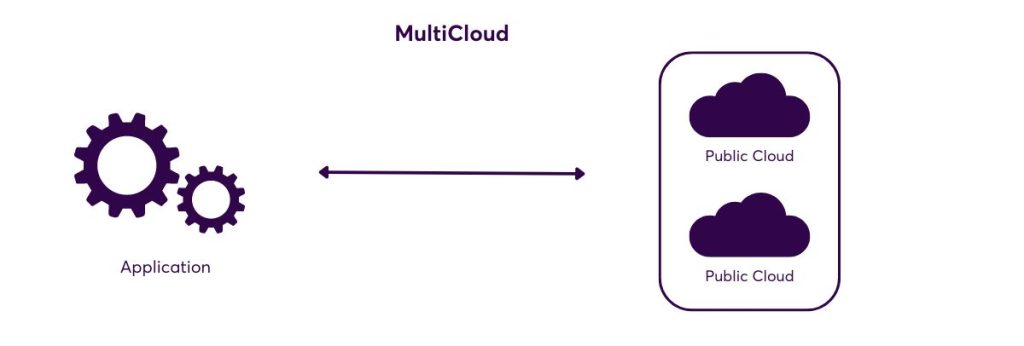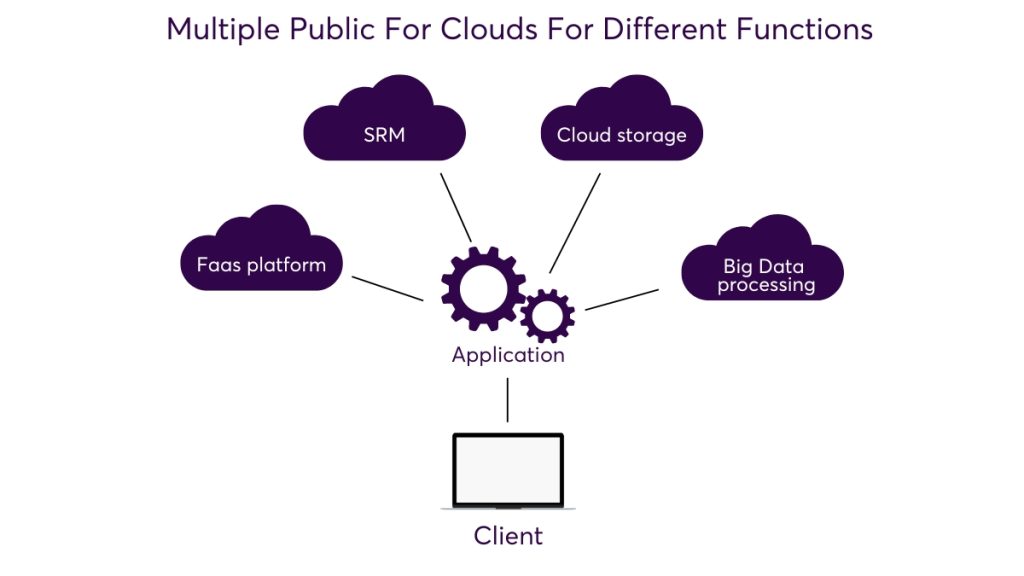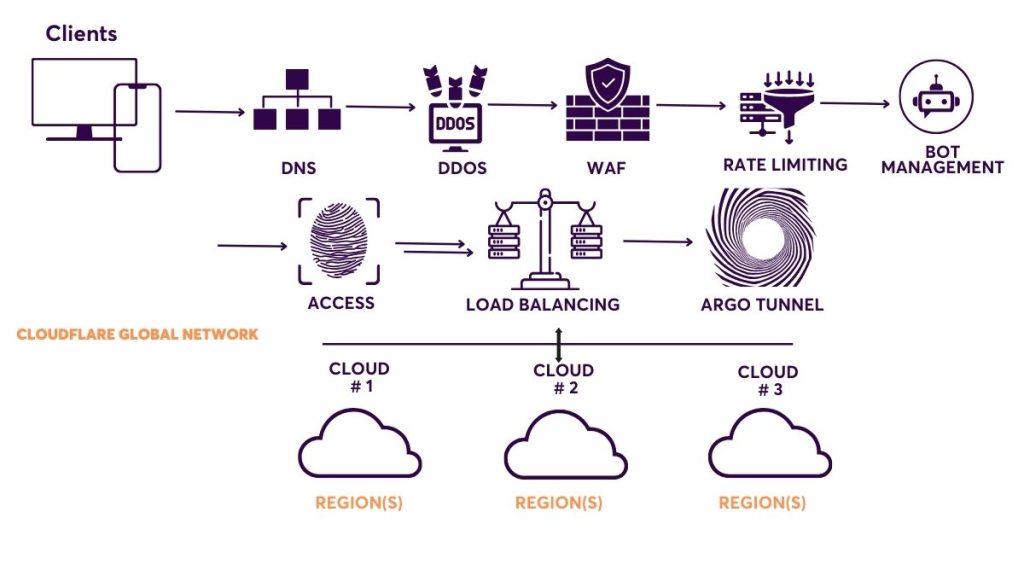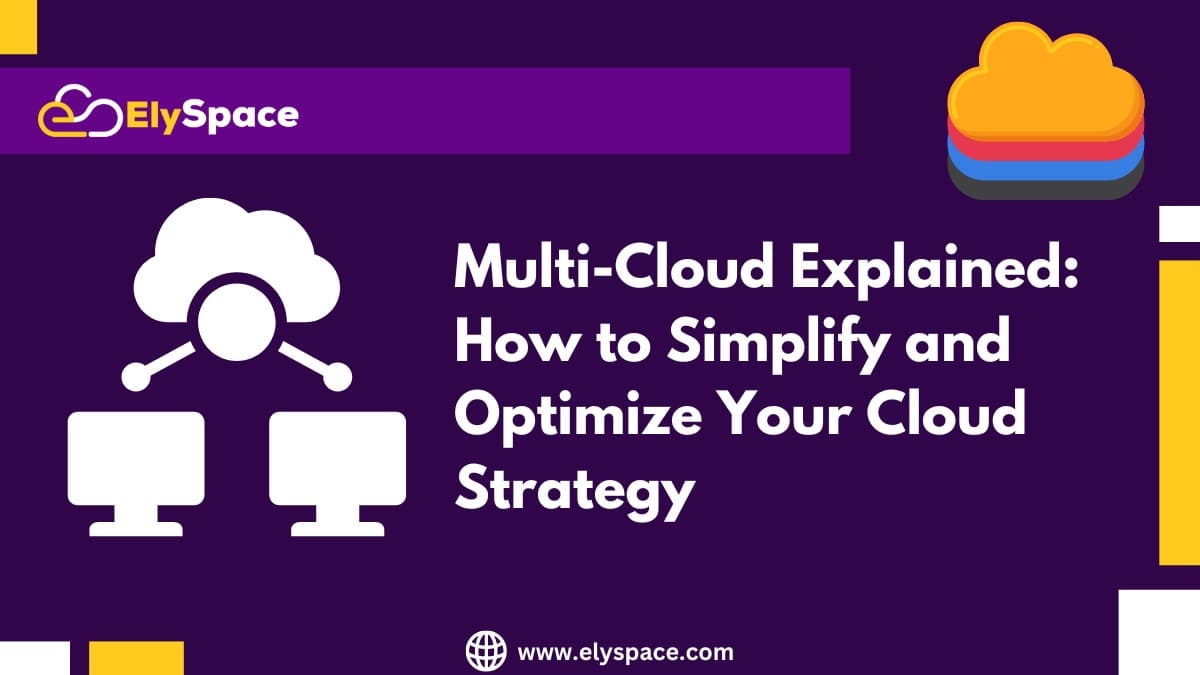Introduction
Cloud computing transforms how we store data and run applications, offering powerful and scalable solutions. With many cloud providers available, selecting the right one can be overwhelming. This guide explains the concept of multi-cloud, where businesses use multiple cloud services for added flexibility and potential cost savings. We’ll cover what multi-cloud means, how it differs from hybrid cloud, and the benefits and challenges associated with it.
What is multi-cloud?
A multi-cloud strategy means using cloud services from several providers rather than relying on a single provider for all your needs. This approach enables businesses to:
- Optimize Service Utilization: By choosing the best provider for each type of service—such as storage, computing power, or application hosting—companies can leverage the strengths and specialties of different providers. For instance, one provider may offer superior data analytics, while another excels in high-speed content delivery.
- Enhance Risk Management: Utilizing multiple cloud providers mitigates the risk associated with any single provider’s failure. If one provider experiences downtime or issues, the others can continue to support your business operations.
- Improve Cost Efficiency: Multi-cloud strategies allow businesses to take advantage of competitive pricing and specific features from different providers, potentially reducing overall cloud expenditure.


Many organizations adopt a multi-cloud strategy, sometimes without intending to, due to “shadow IT”—the use of unsanctioned cloud services by employees. This can lead to an uncoordinated mix of cloud services within the organization.
Multi-Cloud vs. Hybrid Cloud
Understanding the difference between multi-cloud and hybrid cloud is crucial for designing an effective cloud strategy:
Hybrid Cloud: Hybrid cloud computing combines private cloud resources (dedicated to a single organization) with public cloud services. For example, a company might use its own private cloud for sensitive data and applications, while leveraging public cloud services for less critical operations. This integration allows businesses to benefit from the control and security of private clouds while utilizing the scalability and flexibility of public clouds.
Multi-Cloud: This approach involves using services from multiple public cloud providers. For example, a company might choose Amazon Web Services (AWS) for its computing needs, Microsoft Azure for its data storage, and Google Cloud Platform (GCP) for machine learning and analytics. The primary goal is to select the best provider for each specific need and optimize service delivery.
Pros and Cons of Multi-Cloud
Pros:
- Enhanced Reliability: By distributing workloads across multiple providers, businesses can reduce their dependency on any single provider. This redundancy helps ensure continuity of service even if one provider encounters problems.
- Increased Flexibility: A multi-cloud approach allows organizations to choose the best cloud services for different tasks, enhancing overall operational efficiency and effectiveness.
- Cost Optimization: Businesses can compare and select providers based on cost, performance, and features, leading to potential cost savings.
Cons:
Integration Issues: Integrating different cloud services can be complicated, especially if they use different standards or technologies. This can affect overall system performance and data consistency.
Management Complexity: Coordinating and managing services from multiple cloud providers can be complex. It requires sophisticated tools and processes to monitor and integrate different systems effectively.
Potential Performance Delays: When services across different clouds need to communicate or work together, it can introduce latency or performance bottlenecks, particularly if the clouds are geographically dispersed.
Security Challenges: Managing security across multiple cloud environments can be challenging. Each provider has its own security protocols and practices, requiring careful coordination to ensure comprehensive protection.
Cloudflare’s Role in Multi-Cloud

cloudflare enhances multi-cloud strategies with a range of services designed to improve performance and security:
- Multi-Cloud Load Balancing: Cloudflare distributes incoming traffic across multiple cloud providers to avoid overloading any single provider. This load balancing ensures optimal performance and availability.
- Content Delivery Network (CDN): Cloudflare’s CDN caches and delivers content from servers located closer to users, reducing latency and speeding up load times.
- Web Application Firewall (WAF): Cloudflare’s WAF protects your applications from malicious traffic and security threats, providing an additional layer of defense against cyberattacks.
- Serverless Functions: With Cloudflare Workers, you can deploy serverless functions globally, running code on Cloudflare’s edge network without managing traditional servers. This enables rapid execution of tasks and applications closer to end-users.

Cloudflare can also work as a serverless provider by running serverless functions on its worldwide network. Cloudflare Workers is the platform for creating serverless applications using JavaScript.
What is Shadow IT?
Shadow IT refers to the use of cloud services or software applications within an organization without formal approval or oversight from the IT department. Employees may adopt these tools for convenience or to fulfill immediate needs, which can lead to several issues:
- Security Risks: Unauthorized applications may not comply with the organization’s security policies, leading to potential vulnerabilities.
- Data Management Challenges: Unapproved tools can create data silos and complicate data integration, making it harder to maintain a unified view of information.
- Compliance Issues: Using unsanctioned tools can lead to regulatory compliance problems if they do not meet legal or industry standards.
Managing Multi-Cloud with Cloudflare
Cloudflare provides tools and services that simplify multi-cloud management and enhance overall efficiency:
- Unified Dashboard: Cloudflare’s dashboard offers a centralized view to monitor and control your cloud services, streamlining management across different providers.
- Global Network: With a presence in over 320 cities worldwide, Cloudflare ensures high performance and security for users, regardless of their location.
- Integrated Security: Cloudflare’s security features, including DDoS protection and WAF, help safeguard your multi-cloud environment from various threats.
Conclusion
Adopting a multi-cloud strategy allows businesses to optimize their cloud resources for flexibility, resilience, and cost-effectiveness. While it presents challenges such as management complexity and security risks, these can be mitigated with the right tools and strategies. Cloudflare supports multi-cloud environments with comprehensive services that enhance performance, security, and ease of management. By leveraging a multi-cloud approach, businesses can navigate the complexities of modern cloud computing while achieving greater operational efficiency and resilience.
read also: https://elyspace.com/blog/how-to-choose-the-best-wordpress-hosting-in-2024/

